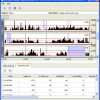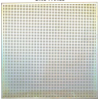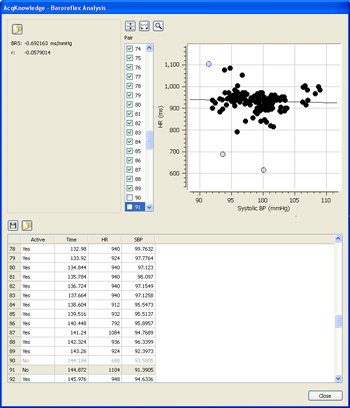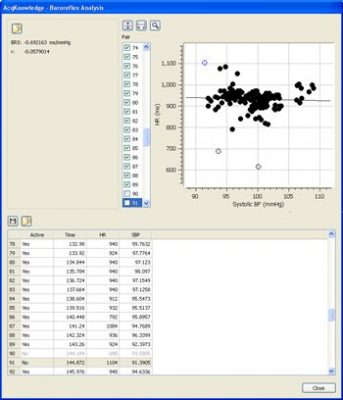The Baroreflex Sensitivity (BRS) analysis license for AcqKnowledge provides two standard algorithms for deriving BRS from measures of blood pressure and ECG, the slope method and the sequence method. Baroreflex Sensitivity (BRS) measures the relationship between blood pressure and heart rate. The body regulates blood pressure to ensure proper blood flow to organs underneath different conditions, e.g. supine to standing. Baroreflex sensitivity is a measure of how quickly the blood pressure system can compensate for changes in conditions. Variations in baroreflex sensitivity are useful as a comparative measure between subjects and for assessing various external impacts.
Slope method:
This method operates over user selected regions of data or the entire file. The routine identifies each ECG cycle and marks the components within the cycle (P,Q,R,S & T) and also locates and marks the systolic and diastolic points of the blood pressure signal. Systolic blood pressure values are plotted against the heart rate values in an interactive X/Y display that includes a table of values for each cycle. When a particular point is selected in the X/Y plot, the display highlights the data in the time series chart display. Data points can be turned off and on by selecting the X/Y points, or identifying them in the data table, and the slope of the best linear regression fit is updated to reflect the changes. The BRS value and goodness of fit value are also displayed and updated as data points are turned on and off.


























